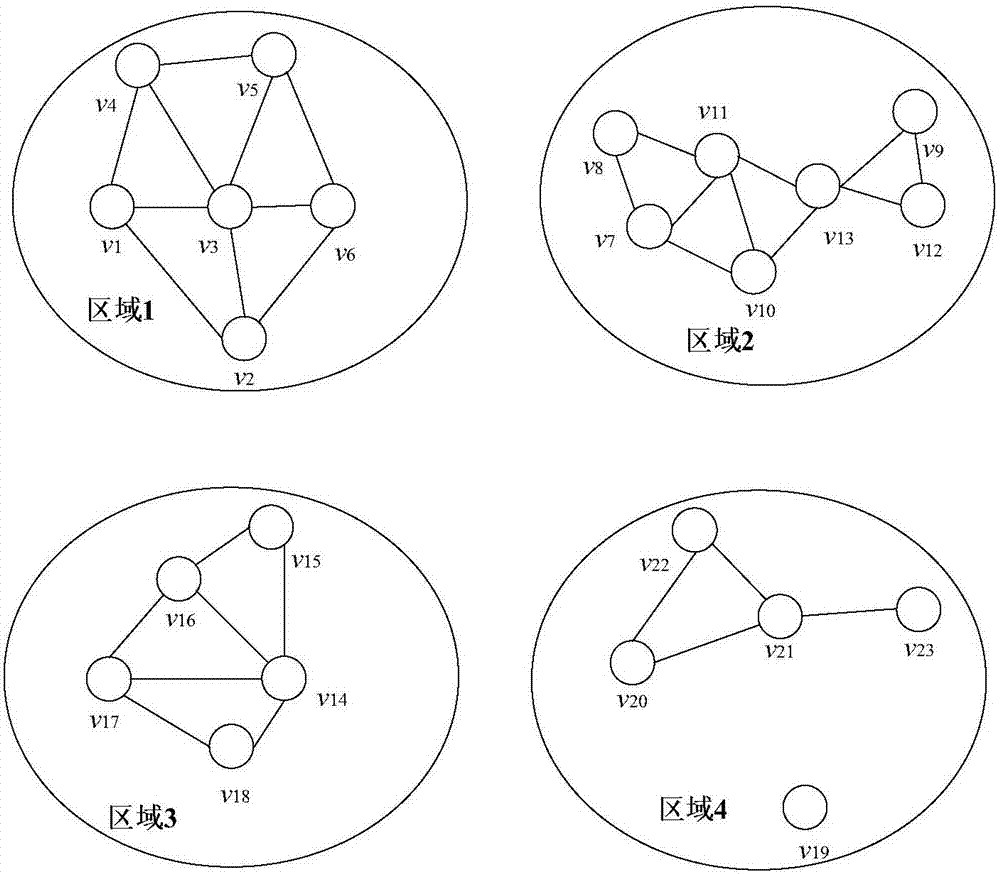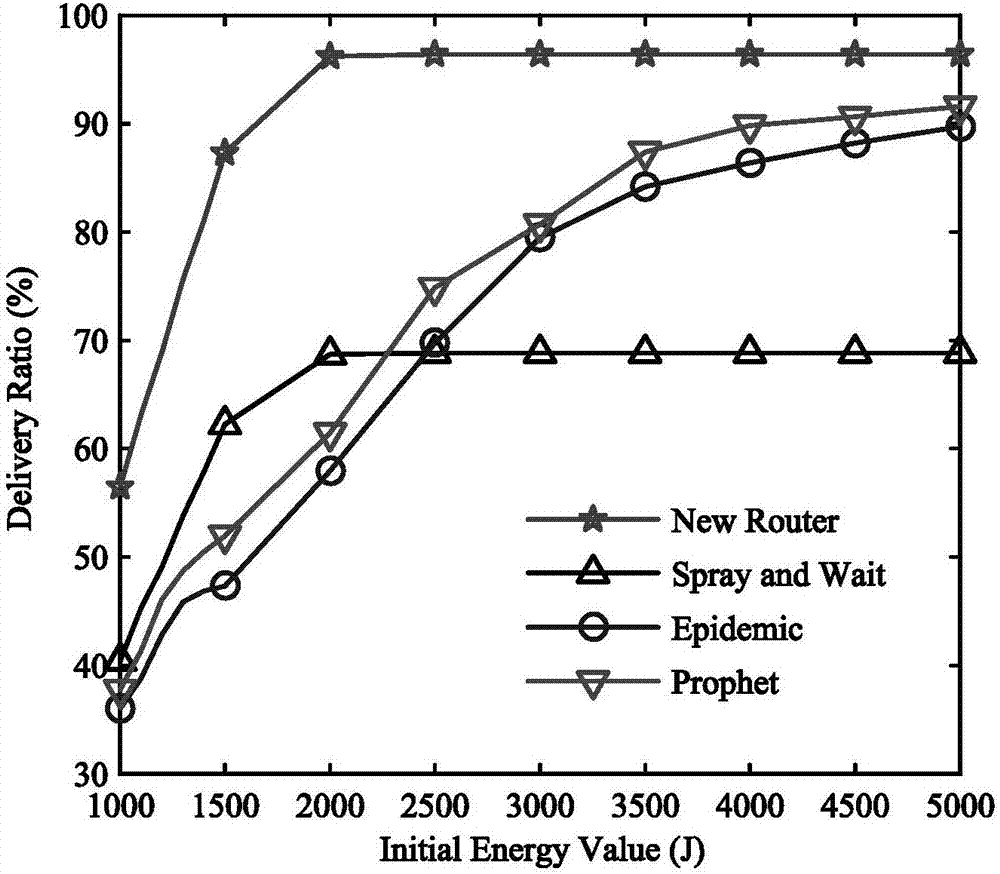Data routing method for mobile opportunistic network based on delivery rate constraint
A mobile opportunistic network and data routing technology, applied in data exchange networks, digital transmission systems, transmission systems, etc., can solve the problem of wireless channel instability without considering node mobility, data routing methods to shorten network lifetime, and data delivery rates. There are no guarantees and other problems to achieve the effect of extending the network lifetime, reducing the number of data broadcasts, and saving energy consumption
- Summary
- Abstract
- Description
- Claims
- Application Information
AI Technical Summary
Problems solved by technology
Method used
Image
Examples
Embodiment Construction
[0077] In the disclosed method, the nodes in the mobile opportunistic network can move at any time, and only when two nodes meet (that is, the distance between the two nodes is within their wireless coverage) can data transmission be carried out; each node can generate data packets , the meta-information of the generated data packet includes the delivery rate requirement, TTL, destination area, etc. of the data packet. Wherein, the delivery rate requirement value is equal to the delivery rate constraint value when the data packet is generated. Nodes will consume a certain amount of energy when sending and receiving data. Each node can know its own remaining energy in real time, and will fail and move out of the network as the energy is exhausted; the TTL value of the data packet will automatically decrease over time. Small, until it decreases to 0, the data packet becomes invalid and is removed from the node cache. Also, time is divided into infinitely repeating cycle times, ...
PUM
 Login to View More
Login to View More Abstract
Description
Claims
Application Information
 Login to View More
Login to View More - Generate Ideas
- Intellectual Property
- Life Sciences
- Materials
- Tech Scout
- Unparalleled Data Quality
- Higher Quality Content
- 60% Fewer Hallucinations
Browse by: Latest US Patents, China's latest patents, Technical Efficacy Thesaurus, Application Domain, Technology Topic, Popular Technical Reports.
© 2025 PatSnap. All rights reserved.Legal|Privacy policy|Modern Slavery Act Transparency Statement|Sitemap|About US| Contact US: help@patsnap.com



